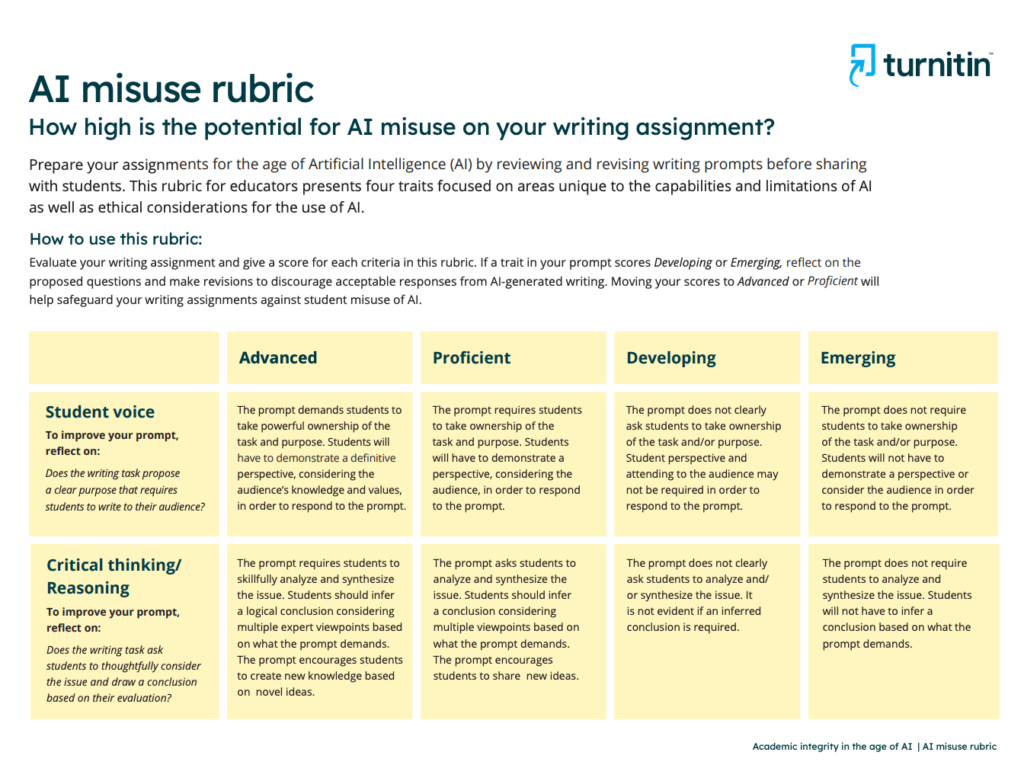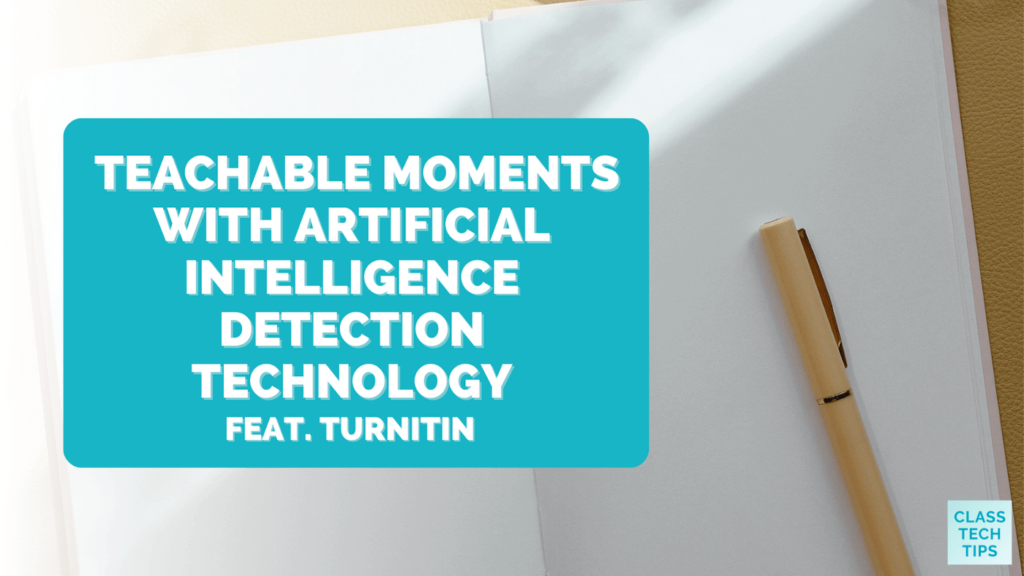How can you tell if a piece of writing came from an artificial intelligence tool? On the blog and podcast, I’ve shared many ways that AI is changing how we think about teaching and learning. Many of my conversations with educators include questions on how AI will impact how students share their learning. There is new artificial intelligence detection technology that can detect the presence of generative AI in writing and consequently make it easier to have those tough conversations about academic integrity and original thought with your students.
Writing produced with AI is all around us and it is increasingly impacting how we think about and value writing in the classroom. Detecting the presence of artificial intelligence sparks more thoughtful conversations with students about digital citizenship. It’s a critical moment to help prepare them for a future where chatbots and generative AI are used every day and for an increasing number of situations.
Today on the blog, I’m sharing big news from Turnitin. They have released an AI detection feature in their product suite to help teachers have informed conversations with students. The detection has been added to Turnitin Feedback Studio and other Turnitin tools.
Artificial Intelligence Detection Technology
If you follow news reports on artificial intelligence, you know this space is evolving quickly and there are plenty of teachers who are worried and scared. But in my view, this is an excellent opportunity to learn about and embrace the technology. Last week in Denver, I had a packed house for a session about AI in the classroom at ASCD’s annual conference. One of the topics of conversation throughout the week of this event was how chatbot technology, or generative AI, would impact the writing classroom.
Today, Turnitin released this new feature in its product suite. Turnitin has a long history in this space. They have been developing writing and feedback tools for educators for 25 years, and this feature addresses the evolving space of artificial intelligence. They understand the ways that AI tools impact teaching and learning. Although it’s certainly still early in the development and proliferation of generative AI and detection technology, there is reason to confident in Turnitin. In the lab, Turnitin’s detection tool identified AI content with 98 percent accuracy.

Turnitin has posted resources for teachers, too. You can learn about upcoming product developments related to AI writing and find rubrics and other guidance on how to teach in the era of AI. This link will take you to that page and you can follow along with other teachers in sharing advice and new resources .
Embracing Teachable Moments
Turnitin has long been an advocate of creating teachable moments when teachers find their students have high “similarity” scores when checking papers for plagiarism. The company says that with the new ability to detect AI in student writing, teachers should keep the same mindset, seeing the ability to detect the presence of generative AI as a chance to have a conversation about what is appropriate use of AI in their writing.
Teachers are learning how to use AI and integrate it into their lessons. At the same time, their students are experimenting with it. In conversations with students, you can be clear about how AI can be used for assignments, even going so far as to work on projects together. As your students test out these tools inside and outside the classroom, remind them that AI writing can be detected, and when unauthorized uses are discovered, use this opportunity for meaningful conversations with students. You can help them understand the value of generating their own thoughts, and of critically assessing what AI may have generated for them. This way they can understand the implication of their choices as they navigate a space that is quickly evolving.

Resources on AI Writing
As you explore this topic, you’ll certainly want to check out the resources Turnitin has published about AI writing. They have even created a rubric to evaluate writing prompts in the age of artificial intelligence. This AI Misuse Rubric tackles the question, “How high is the potential for AI misuse on your writing assignment?” and helps teachers think about their assignments for students in the age of AI.
If you are new to the AI space, you’ll find many helpful resources on this page they’ve created for educators. It includes an AI vocabulary glossary to help you better understand conversations around AI and tips for tackling conversations with students.
Ready to learn more about Turnitin and how they are supporting classroom teachers? Head to this page to learn more about AI writing as you think about this as a teachable moment for student writers.







